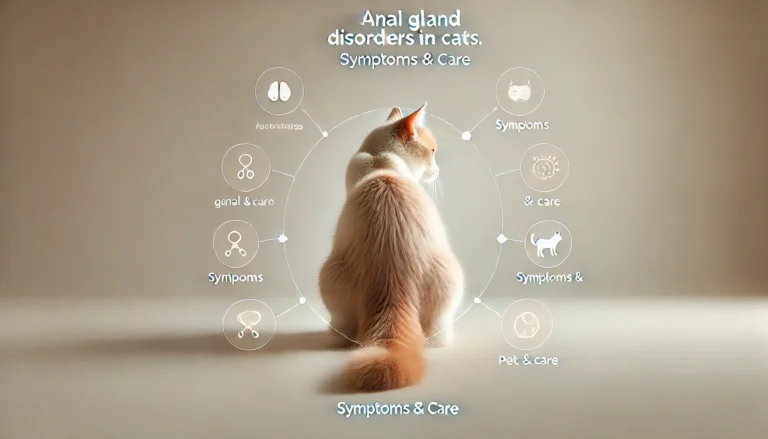Ear Mites in Cats

Introduction to Ear Mites in Cats
Ear mites, scientifically known as Otodectes cynotis, are a common parasitic infection that can affect cats of all ages and breeds. These tiny creatures thrive in the warm, moist environment of a cat’s ear canal, leading to irritation, inflammation, and an intense itching sensation. Understanding the lifecycle, symptoms, treatment options, and prevention strategies for ear mites is essential for any cat owner.

Understanding Ear Mites in Cats
1. What Are Ear Mites?
Ear mites are microscopic, spider-like parasites that inhabit the ears of animals, primarily cats and dogs. In cats, they cause a condition known as otodectic mange, which is characterized by the presence of a dark, coffee-ground-like discharge in the ears.
2. Lifecycle of Ear Mites in Cats
The lifecycle of ear mites includes four stages: eggs, larvae, nymphs, and adults. Starting from an egg, it takes about 3 weeks for a mite to reach adulthood and reproduce. Adult mites can live up to two months, continuously laying eggs and exacerbating the infestation if untreated.
Symptoms of Ear Mites in Cats
Recognizing the signs of ear mites is crucial for early intervention and effective treatment.
1. Physical Signs
- Excessive Scratching and Head Shaking: One of the first signs of an ear mite infestation is your cat scratching its ears or shaking its head excessively due to irritation.
- Ear Discharge: As the mites feed and move, they produce a significant amount of waste which mixes with ear wax and blood to form a dark, crumbly discharge inside the ear.
- Odor: A strong, unpleasant smell often accompanies a severe mite infestation.
2. Behavioral Changes of Ear Mites in Cats
- Irritability and Discomfort: Cats with ear mites may become more irritable and may shy away from having their ears touched due to pain and discomfort.
Diagnosing Ear Mites in Cats
1. Veterinary Examination
A veterinarian can often diagnose ear mites by examining the debris from your cat’s ear under a microscope. The presence of white, moving mites confirms the diagnosis.
2. Signs to Watch For
If you notice your cat displaying any symptoms of ear mites, such as persistent scratching of the ears, head shaking, or any changes in their behavior, a veterinary check is warranted.
Treatment for Ear Mites in Cats
1. Topical Treatments of Ear Mites in Cats
- Prescription Medications: Products like selamectin (Revolution), ivermectin, and moxidectin are effective against ear mites and often provide relief within a few days of application.
- Over-the-Counter Options: There are also many OTC products available, but their effectiveness may vary. It’s important to use these products under veterinary guidance to avoid worsening the condition.
2. Cleaning the Ears
- Proper Technique: Cleaning your cat’s ears is crucial for removing the debris and mites. Use a veterinarian-recommended ear cleaner and follow a gentle, thorough cleaning method to avoid damaging the ear canal.
3. Systemic Treatments of Ear Mites in Cats
- Oral Medications: In severe cases, oral medications may be necessary to fully eradicate the infestation, especially if it has spread to other parts of the body.
Preventing Ear Mites
1. Regular Ear Checks
- Conduct regular inspections of your cat’s ears to catch any signs of ear mites early before they turn into a more serious problem.
2. Maintain a Clean Environment
- Keeping your cat’s living environment clean can help prevent the spread of ear mites, especially if you have multiple pets.
3. Interpet Interaction
- Limit your pets’ interaction with infected animals. Ear mites can easily spread from one animal to another through close contact.
Did you know?
With the right knowledge and care, you can manage and prevent many of the common issues associated with a dog’s penis, contributing to a healthier, happier life for your pet.
Conclusion of Ear Mites in Cats
Ear Mites in Cats are a treatable condition, with numerous effective options available for clearing up the infestation. Understanding the signs and having a good relationship with your veterinarian are key to managing and preventing ear mites. Regular preventive care and maintaining a clean environment are your best tools in ensuring your cat remains happy, healthy, and free from the discomfort of ear mites.
How do you get rid of ear mites in cats?
To effectively eliminate ear mites, use a vet-prescribed acaricidal medication specifically designed for ear mite infestations. These medications usually come in the form of ear drops that need to be applied directly to the inside of the ear canal. Regular cleaning of the ear with a suitable ear cleaner is also necessary to remove debris and mite waste.
How do I tell if my cat has ear mites?
Signs of ear mites include excessive scratching of the ears, shaking the head, a black or brown waxy secretion in the ears resembling coffee grounds, and an unpleasant odor emanating from the ears.
Can humans get ear mites from cats?
It is highly unlikely. Ear mites are generally host-specific to pets and do not survive long on human skin.
Can I touch my cat with ear mites?
Yes, you can still touch and handle your cat. Ear mites are not typically transmitted through casual contact, but it’s important to wash your hands after handling an infected cat to maintain hygiene.
How long do cat ear mites last?
Without treatment, ear mites can continue to live and reproduce in a cat’s ears indefinitely. With proper treatment, symptoms should begin to improve within a few weeks.
Can cat mites transfer to humans?
Cat mites generally do not transfer to humans due to species specificity, though in rare cases, they might cause temporary irritation if they come into contact with human skin.
How do I clean my cat’s ears?
Use a cat-specific ear cleaning solution. Apply the solution into the ear canal, gently massage the base of the ear to break up debris, and then wipe away the loosened material with a cotton ball or soft cloth.
How to get rid of black stuff in cat’s ears?
The black stuff is typically ear mite excrement. Cleaning the ears thoroughly with a recommended ear cleaner and removing all visible debris is crucial. Persistent cases should be examined by a veterinarian.
Can ear mites go away on their own?
No, ear mites do not go away on their own. They require treatment to eliminate the infestation and prevent secondary infections.
What kills ear mites in home?
To eliminate ear mites from your home, wash all bedding, vacuum carpets and furniture, and clean areas where your cat spends a lot of time. While ear mites primarily live on their host, these steps help prevent re-infestation. Some pet owners use environmental sprays designed to kill mites, but these should be used with caution and as directed to avoid harming your pets or family.






